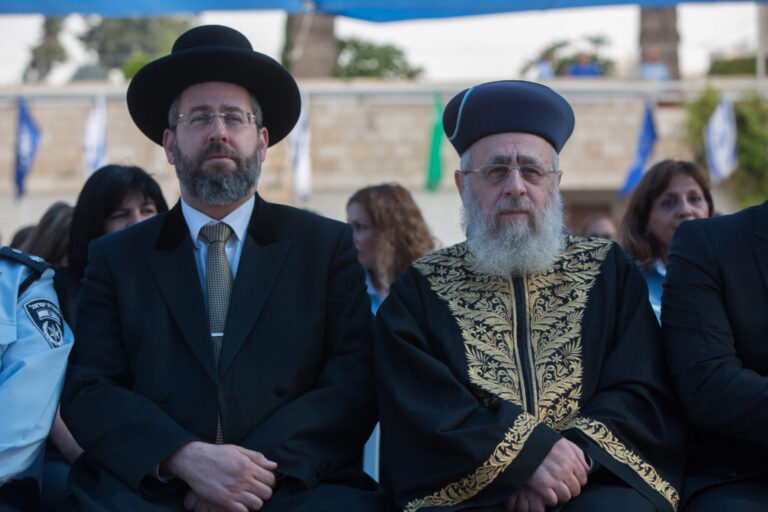Israel’s two chief rabbis have recently stepped down from their positions, leaving the roles officially vacant for the first time in over a hundred years due to the government’s delay in setting a date for their successors’ election.
Two interim rabbis have been appointed to temporarily fulfill the duties of the chief rabbis, but the identity and timing of the next Ashkenazi and Sephardi chief rabbis remain uncertain. The outgoing rabbis, Ashkenazi David Lau and Sephardi Yitzhak Yosef, were elected in 2013 for a 10-year term by a group of around 150 individuals.
The chief rabbis oversee the extensive bureaucracy of the haredi Orthodox-controlled Israeli Chief Rabbinate, which manages various aspects of religious life in Israel such as marriage, burial, and conversion. While they do not have significant power over the day-to-day operations of the Chief Rabbinate, they traditionally hold substantial influence in Israeli public religious discussions.
The government has repeatedly postponed the election for the new chief rabbis due to scheduling conflicts and concerns about the composition of the voting body. Various petitions have been filed with the Supreme Court urging the government to schedule elections promptly, as required by law.
Criticism of the Chief Rabbinate is widespread among Israeli Jews, with secular Jews objecting to its religious regulations and haredi Jews either wanting stricter measures or disapproving of its ties to the government. A survey conducted by the Israel Democracy Institute in May revealed that only 44% of Israeli Jews view the Chief Rabbinate as a religious or spiritual authority, with the highest approval rating coming from religious Zionists.
Efforts to reform the Chief Rabbinate through elections have been made in the past, with the upcoming election being closely watched as relatives of the outgoing rabbis aim to retain the positions within their families. The future of the Chief Rabbinate remains uncertain as the government grapples with the challenges of electing new chief rabbis in a changing religious landscape.
Source link

